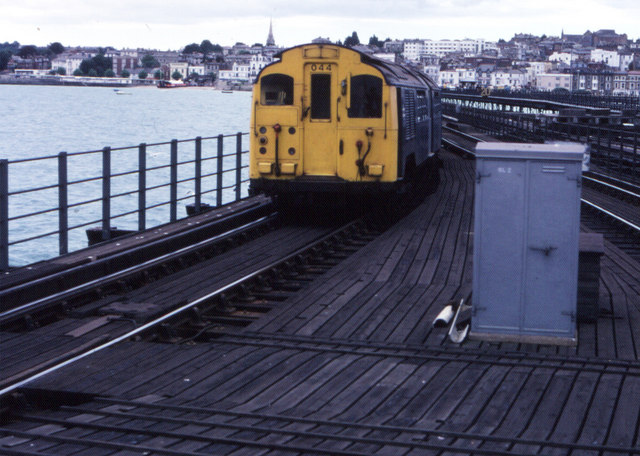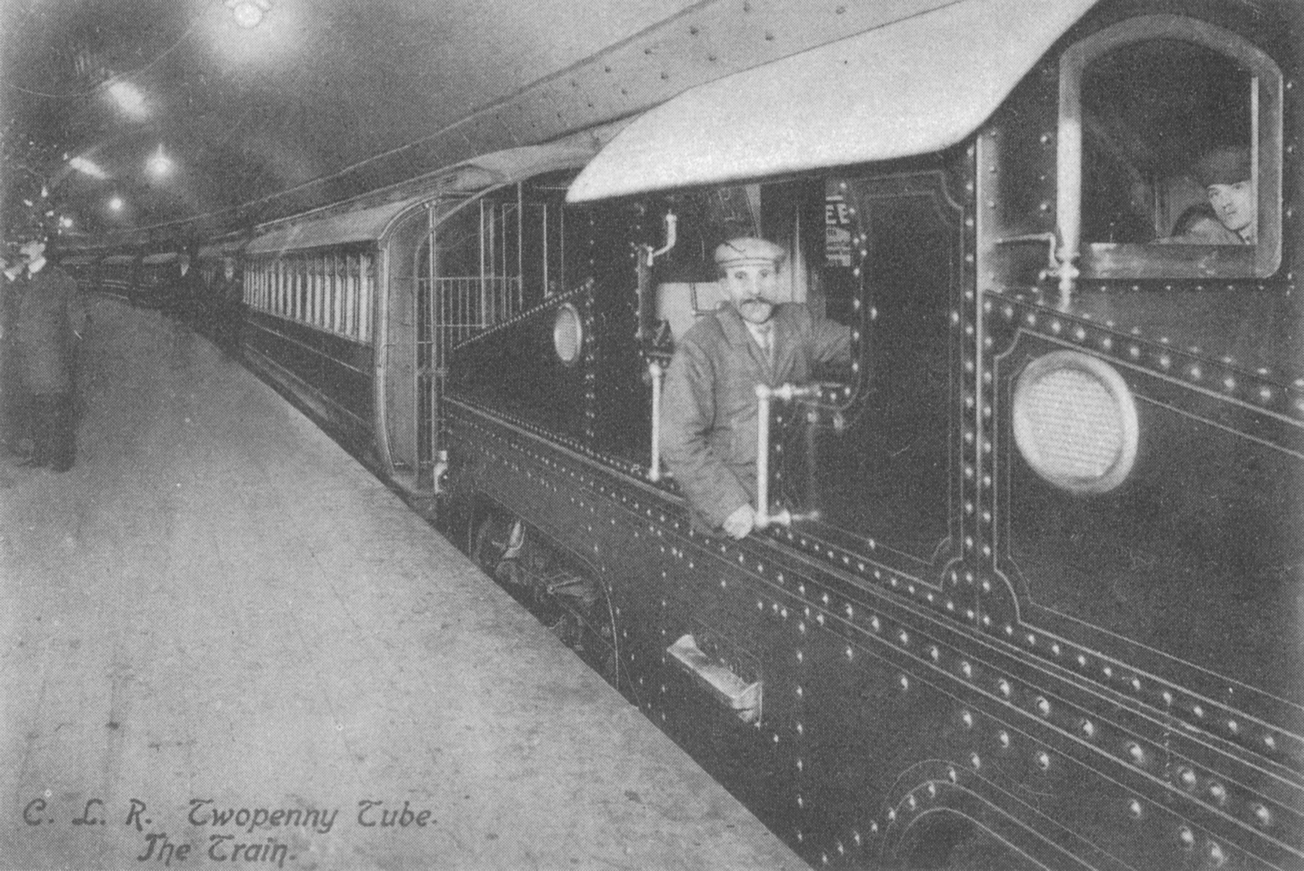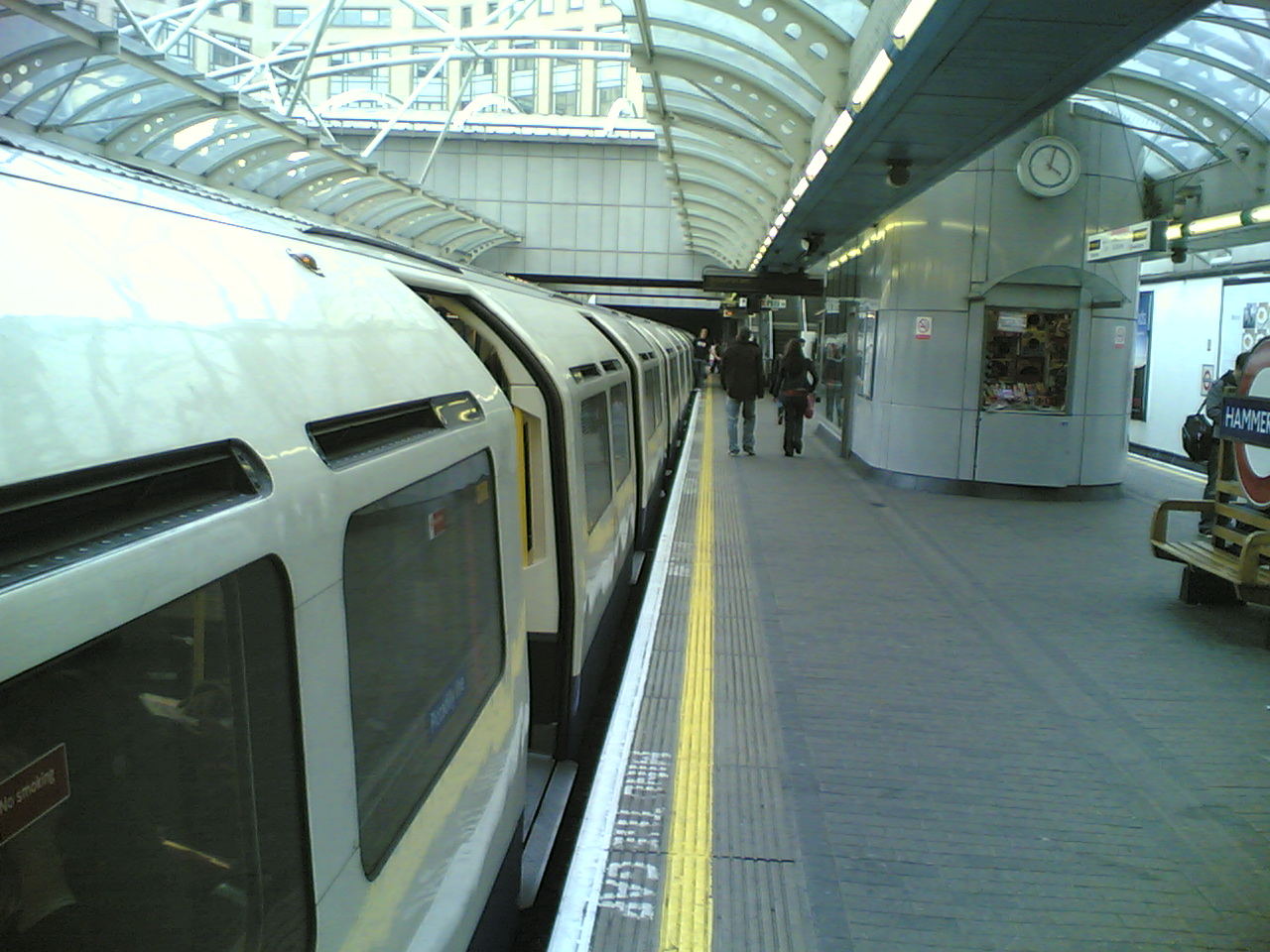|
London Underground Standard Stock
The Standard Stock title was applied to a variety of Tube stock built between 1923 and 1934, all of which shared the same basic characteristics, but with some detailed differences. This design is sometimes referred to as 1923 Tube Stock, 1923 Stock, or Pre 1938 Stock. Most of the Standard Stock was built to replace the first generation of London Underground 1906 Stock, "Gate Stock" Tube trains or to provide additional trains for extensions built in the 1920s and early 1930s. Standard Stock cars consisted of motor cars, with a driver's cab, behind which was a "switch compartment" occupying approximately one-third of the length of the car, plus trailer cars and "control trailers", with a driving cab but no motor. All were equipped with air operated sliding doors. The guard's door on the earlier trains was a manually operated, inward-opening hinged door. 1922 Stock prototype cars For evaluation purposes, in anticipation of the large number of cars that were to be built over the ne ... [...More Info...] [...Related Items...] OR: [Wikipedia] [Google] [Baidu] |
Birmingham Railway Carriage And Wagon Company
The Birmingham Railway Carriage and Wagon Company (BRC&W) was a railway locomotive and carriage builder, founded in Birmingham, England and, for most of its existence, located at nearby Smethwick, with the factory divided by the boundary between the two places. The company was established in 1854. Production BRC&W made not only carriages and wagons, but a range of vehicles, from aeroplanes and military gliders to buses, trolleybuses and tanks. Nevertheless, it is as a builder of railway rolling stock that the company is best remembered, exporting to most parts of the new and old worlds. It supplied vehicles to all four of the pre-nationalisation "big four" railway companies (London, Midland and Scottish Railway, LMS, Southern Railway (UK), SR, London and North Eastern Railway, LNER and Great Western Railway, GWR), British Rail, Pullman Company, Pullman (some of which are still in use) and Compagnie Internationale des Wagons-Lits, Wagons-Lits, plus overseas railways with dive ... [...More Info...] [...Related Items...] OR: [Wikipedia] [Google] [Baidu] |
Charing Cross, Euston And Hampstead Railway
The Charing Cross, Euston and Hampstead Railway (CCE&HR), also known as the Hampstead Tube, was a railway company established in 1891 that constructed a deep-level underground "tube" railway in London. Construction of the CCE&HR was delayed for more than a decade while funding was sought. In 1902 it became a subsidiary of the Underground Electric Railways Company of London (UERL), controlled by American financier Charles Yerkes. The UERL quickly raised the funds, mainly from foreign investors. Various routes were planned, but a number of these were rejected by Parliament. Plans for tunnels under Hampstead Heath were authorised, despite opposition by many local residents who believed they would damage the ecology of the Heath. When opened in 1907, the CCE&HR's line served 16 stations and ran for Length of line calculated from distances given at in a pair of tunnels between its southern terminus at Charing Cross and its two northern termini at Archway and Golders Green. Extensi ... [...More Info...] [...Related Items...] OR: [Wikipedia] [Google] [Baidu] |
West Ruislip Tube Station
West Ruislip () is an interchange station on Ickenham High Road on the borders of Ickenham and western Ruislip in the London Borough of Hillingdon in Greater London, England, formerly in the county of Middlesex. It is served by London Underground and National Rail. On the London Underground, the station is the western terminus of its branch of the Central line and the next station towards east is Ruislip Gardens. It is also on the Chiltern Railways of the National Rail. The Central line and Chiltern Railways platforms and ticket office hall are managed by LU. The closest station on the Metropolitan and Piccadilly lines is Ickenham, from this station. History The station was opened on 2 April 1906 as Ruislip & Ickenham by the Great Western and Great Central Joint Railway (GW&GCJR). The GW&GCJR connected London and the Midlands via High Wycombe and provided an alternative route to the Great Central Railway's (GCR's) main line through Aylesbury, Harrow and Wembley which sh ... [...More Info...] [...Related Items...] OR: [Wikipedia] [Google] [Baidu] |
London Underground 1900/1903 Stock
The Central London Railway Stock were electric multiple units composed of trailers that had been converted from carriages designed to be hauled by electric locomotives with new motor cars. The Central London Railway opened in 1900 with electric locomotives hauling wooden carriages, but the heavy locomotives caused vibrations that could be felt in the buildings above the route. It was found that conversion to electric multiple units solved the problem, so new motor cars were bought and replaced all the locomotives by June 1903. Trains normally ran with six-cars, four trailers and two motor-cars. Some trailers were equipped with control equipment to allow trains to be formed with three cars. Work started in 1912 on an extension to Ealing Broadway, and new more powerful motor cars were ordered. These arrived in 1915, but completion of the extension was delayed due to the outbreak of World War I, and the cars were stored. In 1917, they were lent to the Bakerloo line, where they ran o ... [...More Info...] [...Related Items...] OR: [Wikipedia] [Google] [Baidu] |
Northern City Line
The Northern City Line (NCL) is a commuter railway line in England, which runs from Moorgate station to Finsbury Park in London with services running beyond. It is part of the Great Northern Route services, and operates as the south-eastern branch of the East Coast Main Line (ECML). It is underground from Moorgate to Drayton Park in Highbury, from which point it runs in a cutting until joining the ECML south of Finsbury Park. Its stations span northern inner districts of Greater London southwards to the City of London, the UK's main financial centre. Since December 2015, its service timetable has been extended to run into the late evenings and at weekends, meeting a new franchise commitment for a minimum of six trains per hour until 23:59 on weekdays and four trains per hour at weekends. The official name for this line is the Moorgate Line, but it is rarely referred to as this due to confusion with the Widened Lines route from to , which, until March 2009, also served surf ... [...More Info...] [...Related Items...] OR: [Wikipedia] [Google] [Baidu] |
London Underground 1938 Stock
The London Underground 1938 Stock is a London Underground tube stock design. A total of 1,121 cars were built by Metro-Cammell and Birmingham RC&W. An additional 173 cars were added to the fleet by the end of 1953, comprising 91 new builds (the 1949 Tube Stock), 76 conversions from Pre-1938 Tube Stock or 1935 Tube Stock, and six unconverted cars of 1935 Tube Stock, and the stock was used on the London Underground until 1988. During their long lives they worked on the Bakerloo, Northern, Piccadilly, East London, Central, and Northern City lines. Ten sets were refurbished and ran on the Isle of Wight as Class 483, making them the oldest passenger rolling stock operating timetabled services on the National Rail network at the time of their withdrawal in January 2021. The trains represented a major technical advance, as all the electrical equipment was located under the floor for the first time. All previous tube stock had large equipment compartments behind the dri ... [...More Info...] [...Related Items...] OR: [Wikipedia] [Google] [Baidu] |
Hammersmith Tube Station (District And Piccadilly Lines)
Hammersmith is a London Underground station in Hammersmith, London. It is served by the District line, District and Piccadilly line, Piccadilly lines, providing cross-platform interchange between the lines. On the District line, the station between Ravenscourt Park tube station, Ravenscourt Park and Barons Court tube station, Barons Court stations. On the Piccadilly line, it is between Acton Town tube station, Acton Town (or Turnham Green tube station, Turnham Green stations at very early morning and late evening hours) and Barons Court stations. The station is located in Travelcard Zone 2. The Circle line (London Underground), Circle and Hammersmith & City line, Hammersmith & City lines' Hammersmith tube station (Circle and Hammersmith & City lines), station of the same name is a separate station to the north-west. The two stations are separated by Hammersmith Broadway (road), Hammersmith Broadway.As the crow flies, the stations are about apart door to door, although the posit ... [...More Info...] [...Related Items...] OR: [Wikipedia] [Google] [Baidu] |
Structure Gauge
A structure gauge, also called the minimum structure outline, is a diagram or physical structure that sets limits to the extent that bridges, tunnels and other infrastructure can encroach on rail vehicles. It specifies the height and width of station platforms, tunnels and bridges, and the width of the doors that allow access to a warehouse from a rail siding. Specifications may include the minimum distance from rail vehicles to railway platforms, buildings, lineside electrical equipment cabinets, signalling equipment, third rails or supports for overhead lines. A related but separate gauge is the loading gauge: a diagram or physical structure that defines the maximum height and width dimensions in railway vehicles and their loads. The difference between these two gauges is called the clearance. The specified amount of clearance makes allowance for wobbling of rail vehicles at speed or the shifting of vehicles on curves; consequently, in some circumstances a train may ... [...More Info...] [...Related Items...] OR: [Wikipedia] [Google] [Baidu] |
General Electric Company Plc
The General Electric Company (GEC) was a major British industrial conglomerate involved in consumer and defence electronics, communications, and engineering. It was originally founded in 1886 as G. Binswanger and Company as an electrical goods wholesaler based in London. It quickly adopted a then-unorthodox business model of supplying electrical components over the counter. In 1889, the business was incorporated as the General Electric Company Ltd, and became a public limited company 11 years later. During the 1890s and 1900s, the company heavily invested into electric lighting, a sector that proved to be immensely profitable in the long term. The GEC was heavily impacted by the outbreak of the First World War, supplying various goods to the military, and thus becoming a major player in the electrical industry. In 1921, a new purpose-built company headquarters (Magnet House) was opened in Kingsway, London; two years later, GEC's industrial research laboratories at Wembley (late ... [...More Info...] [...Related Items...] OR: [Wikipedia] [Google] [Baidu] |
British Thomson-Houston
British Thomson-Houston (BTH) was a British engineering and heavy industry, heavy industrial company, based at Rugby, Warwickshire, England. Originally founded to sell products from the Thomson-Houston Electric Company, it soon became a manufacturer using licences from the American company. They were known primarily for their electrical systems and steam turbines. BTH merged with the Metropolitan-Vickers company in 1928 to form Associated Electrical Industries (AEI), but the two brand identities were maintained until 1960. The holding company, AEI, was bought by The General Electric Company, GEC in 1967. In the 1960s AEI's apprenticeships were highly thought-of, both by the apprentices themselves and by their future employers, because they gave the participants valuable experience in the design, production and overall industrial management of a very wide range of electrical products. Over a hundred of the apprentices - who came to Rugby from all over the UK, and a few from abro ... [...More Info...] [...Related Items...] OR: [Wikipedia] [Google] [Baidu] |
London Underground Electric Locomotives
Electric locomotives were first used on the London Underground when the first deep-level tube line, the City and South London Railway (C&SLR), was opened in 1890. The first underground railways in London, the Metropolitan Railway (MR) and the District Railway (DR), used specially built London Underground steam locomotives, steam locomotives to haul their trains through shallow tunnels which had many ventilation openings to allow steam and smoke to clear from the tunnels. It was impractical to use steam locomotives in the small unvented tubular tunnels of the deep-level lines, and the only options were rope haulage (as on the Glasgow Subway) or electric locomotives. The C&SLR was opened just a few years after the very first use of electricity to drive rail vehicles (trains or trams) and the primitive locomotives reflected this. Over the next 15 years, motors became smaller, gear drives and motor suspension were developed and reliable multiple unit control became available. Electri ... [...More Info...] [...Related Items...] OR: [Wikipedia] [Google] [Baidu] |
City And South London Railway
The City and South London Railway (C&SLR) was the first successful deep-level underground "tube" railway in the world, and the first major railway to use Railway electrification in Great Britain, electric traction. The railway was originally intended for cable-hauled trains, but owing to the bankruptcy of the cable contractor during construction, a system of electric traction using electric locomotives – an experimental technology at the time – was chosen instead. When opened in 1890, the line had six stations and ran for Length of line calculated from distances given at in a pair of tunnels between the City of London and Stockwell, passing under the River Thames. The diameter of the tunnels restricted the size of the trains, and the small carriages with their high-backed seating were nicknamed ''padded cells''. The railway was extended several times north and south, eventually serving 22 stations over a distance of from Camden Town in north London to Morden in south Lond ... [...More Info...] [...Related Items...] OR: [Wikipedia] [Google] [Baidu] |






